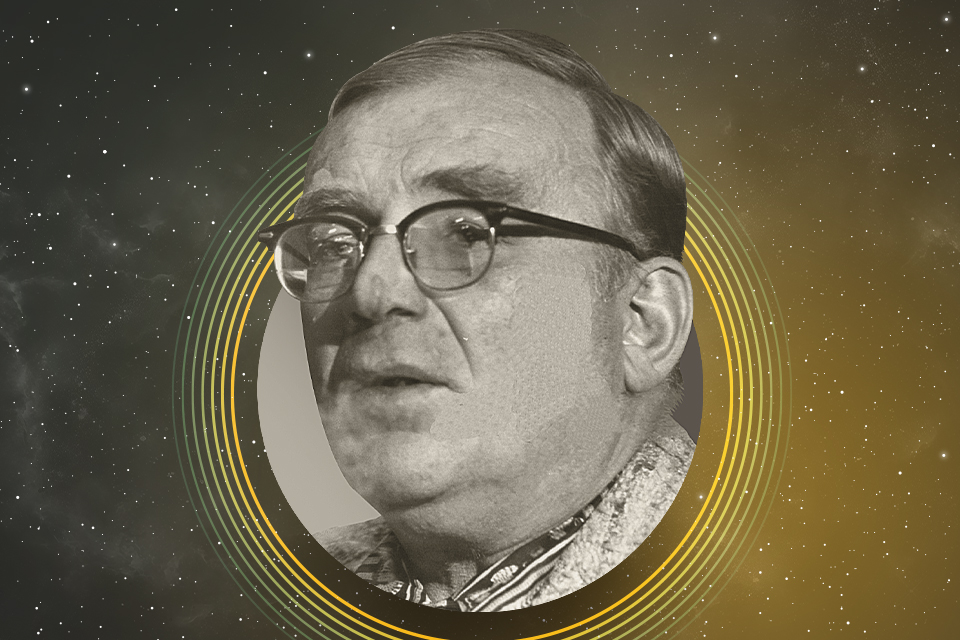George Gamow is an outstanding mathematician and physicist. He was born in Odesa on March 4, 1904. Therefore, we celebrate 120 years since his birth. Gamow is known for a number of important scientific papers concerning nuclear decay, the processes that occur inside stars, and even how our universe originated.

1. Who is George Gamow?
George Gamow was a man of difficult fate, who happened to be a Russian, Soviet and American physicist and mathematician. He was born in Odesa in 1904, so if you wish, you can recognize him as a Ukrainian scientist. However, later he went to study in Leningrad, where he made his first scientific discoveries.
In 1928-1930, Gamow interned in Germany and made many acquaintances with leading European scientists, but returned to the USSR. There, at the age of 28, he became the youngest member of the Academy of Sciences.
But Gamow already knew that he would not live in the Soviet Union. He even tried to escape with his wife from Crimea to Turkey by kayak, but these plans were prevented by a storm. Finally, the physicist was able to get permission to travel to the congress abroad, and he just didn’t come back.
Gamow’s later life was connected with the USA, where he lived until his death in 1968. He was not allowed to work with the atomic bomb, but he managed to join other studies.
2. What interesting things did Gamow create in theoretical physics?
Gamow completed his first defining work in theoretical physics back in the Soviet Union. Back then, scientists were arguing about the possibility of nuclear fusion reactions. In order for them to occur, the nuclei need to overcome the Coulomb barrier — the repulsive forces of charges with the same sign, which prevent them from approaching zero distance.
It was believed that to overcome the Coulomb barrier, huge energy was needed, which atomic nuclei were not so easy to receive. However, Gamow theoretically describes the possibility of a tunneling effect, due to which synthesis is possible under much simpler conditions.
3. What did George Gamow see about the stars?
Research in the field of the tunnel effect found its continuation when Gamow arrived in the USA. Scientists began to build a modern theory of how stars glow and where they take energy on its basis. The answer was thermonuclear reactions.
Gamow, together with his friend Edward Teller, began to recreate them. At first, he managed to build a theory of one of the elements of this process — beta decay. And already in 1937-1940, the first theory of the evolution of stars in the Universe was created. A little later, he would be able to explain how the luminaries known as red giants could exist.
4. Did Gamow create the Big Bang Theory?
Gamow’s name is often associated with the Big Bang Theory. However, he did not create it. Back in 1922, his teacher Alexander Friedmann expressed similar ideas. In 1946, this theory was already well known to physicists all over the world, although they continued to argue about what the universe was like in the beginning.
Gamow theoretically proved that conditions existed in the hot universe for primary nucleosynthesis — the formation of atoms. The article, which first outlined the theory of the formation of chemical elements, was published in 1948 and went down in history as the αβγ theory. It got this name due to the fact that its authors were R. A. Alpher, H. Bethe and G. Gamow. At the same time, Hans Bethe was not doing anything like that at that time. But the joker Gamow included him as a co-author for the sake of comic effect. Later, this scientist became really interested in this theory and significantly supplemented it.
5. How did George Gamow popularize science?
In 1938, Gamow wrote a short story about the adventures of the bank clerk Mr. Tompkins in the Theory of Relativity, where he explained in simple language what it was. No one wanted to publish it for a while, but in the end he still got into the Discovery magazine, thanks to which he became widely known.
Gamow had to write several more stories about his hero and published them in a separate book. And subsequently, he already had five books about Mr. Tompkins, who became acquainted with quantum mechanics and molecular biology. As a result, the popularization of science became a constant activity of the scientist, and he even received a UNESCO prize in this field.
Follow us on Twitter to get the most interesting space news in time
https://twitter.comne/ust_magazine


